AWS Certified Developer - Associate
Databases
DynamoDB Overview
In this lesson, we provide a comprehensive overview of DynamoDB, AWS's renowned fully managed NoSQL database service. This material is essential for the Developer Associate exam, so it's crucial to grasp DynamoDB's core concepts and features.
Before we dive into DynamoDB, let's briefly revisit NoSQL databases. Unlike traditional SQL databases—such as those managed with AWS RDS—which require predefined schemas, NoSQL databases excel at managing large volumes of unstructured or semi-structured data. They offer flexibility by allowing dynamic schema changes and support various data models, including:
- Key-Value Stores: Retrieve values using unique keys.
- Document Stores: Use document-like structures (e.g., JSON or XML) that can include nested documents.
- Column-Family Stores: Organize data into rows and columns, accommodating varied column structures.
- Graph Databases: Represent data as nodes, edges, and properties, ideal for depicting complex relationships.
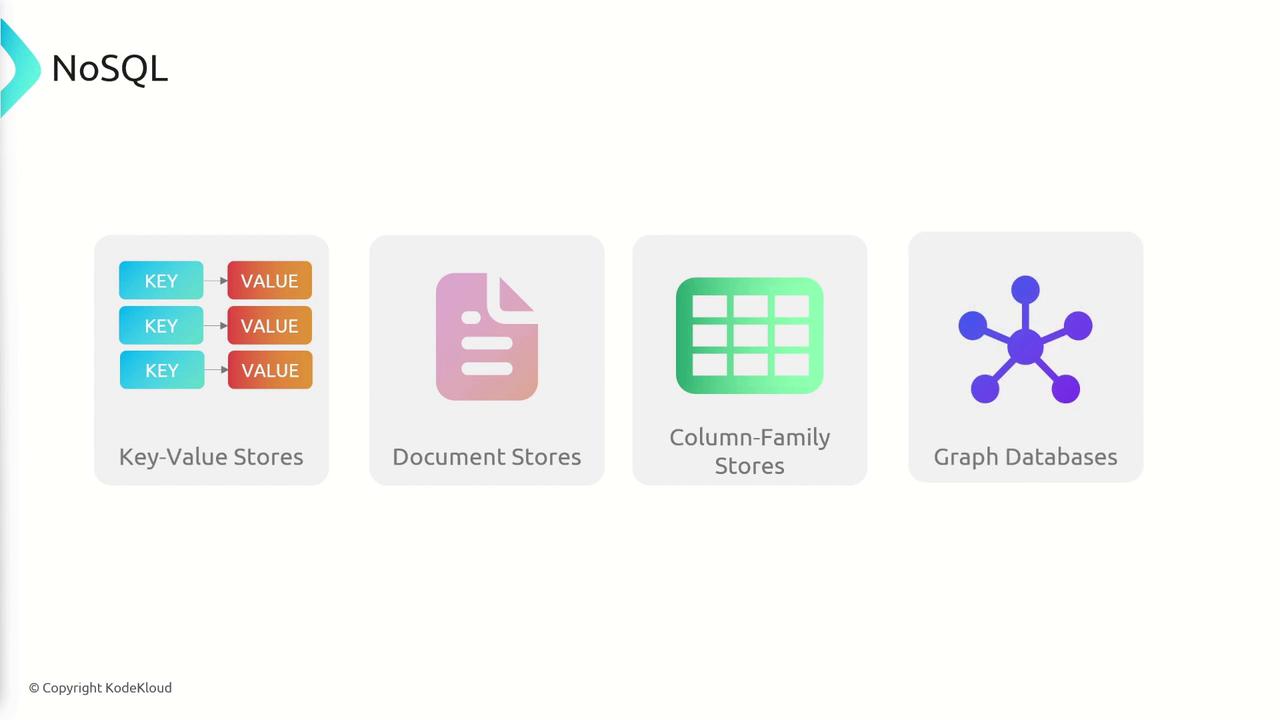
DynamoDB offers high performance and seamless scalability with low latency, similar to how AWS RDS manages relational databases. With DynamoDB, AWS handles the infrastructure, allowing you to focus on storing application data—be it user information, product details, or other business-critical data.
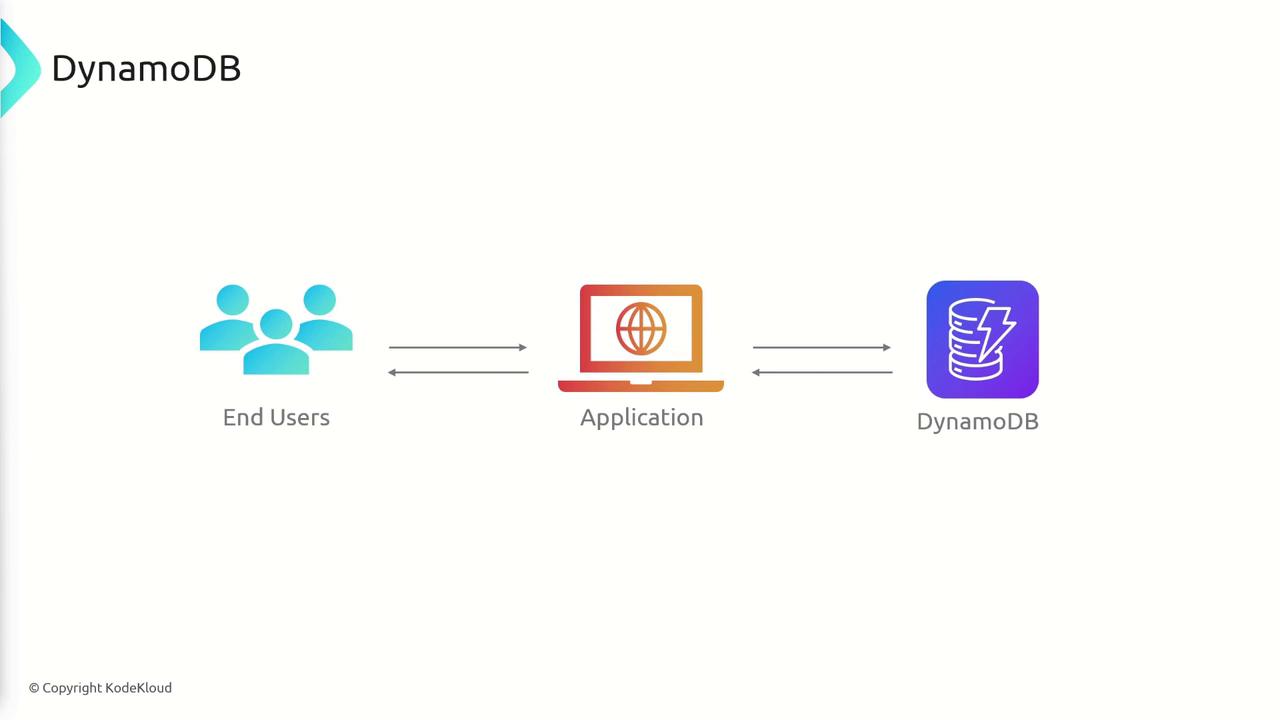
Key Benefits & Features
DynamoDB comes with several significant advantages:
- Seamless Scalability: Effortlessly adapt to growth without provisioning hardware or managing complex database configurations.
- High Performance: Enjoy fast and predictable performance with low-latency data retrieval.
- Flexible Data Model: Design your data schema to perfectly match your application requirements.
- Cost-Effectiveness: Only pay for the resources you actually use thanks to its pay-as-you-go pricing model.
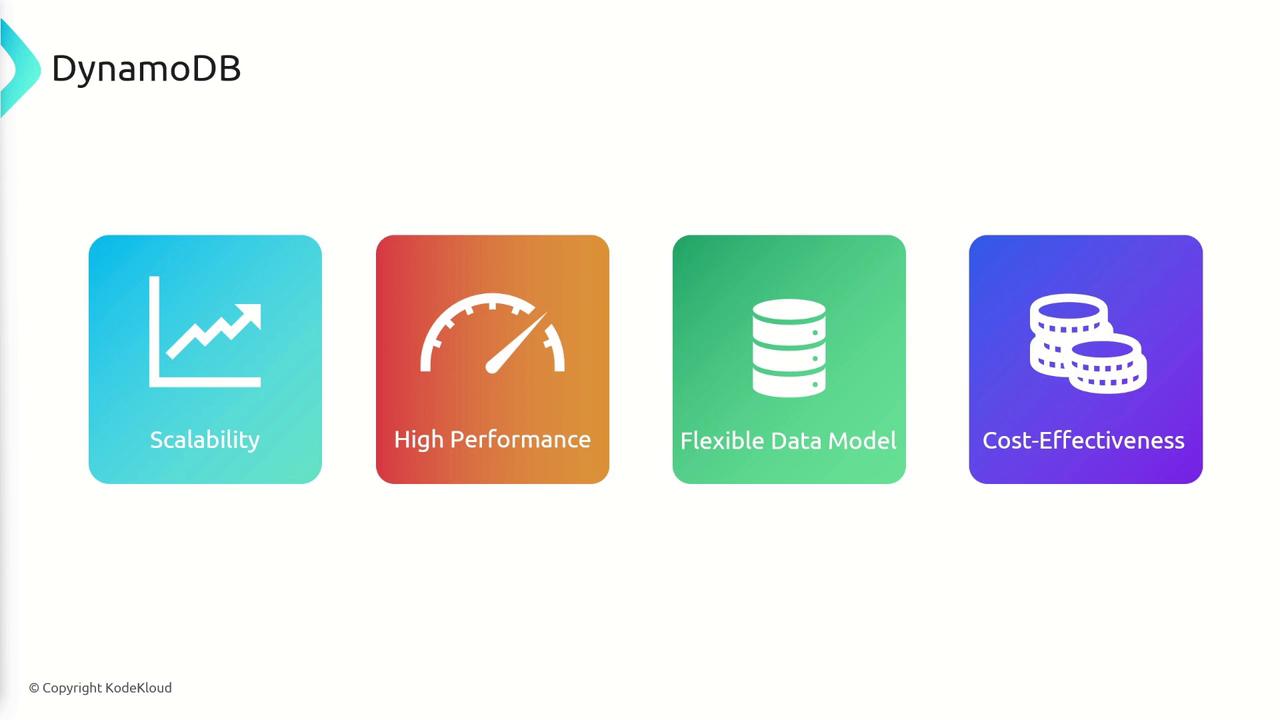
Beyond these benefits, DynamoDB is engineered for high availability and durability. It replicates data across multiple Availability Zones automatically, ensuring continuous operation. Additional features include support for streams—capturing a time-ordered sequence of item-level modifications that can trigger workflows or enable data replication—and ACID-compliant transactions. These ensure that all database operations maintain:
- Atomicity: All operations in a transaction succeed or fail as one.
- Consistency: Data modifications adhere to established database constraints.
- Isolation: In-progress transactions remain invisible to other operations, eliminating race conditions.
- Durability: Committed transactions remain permanent, even during system failures.
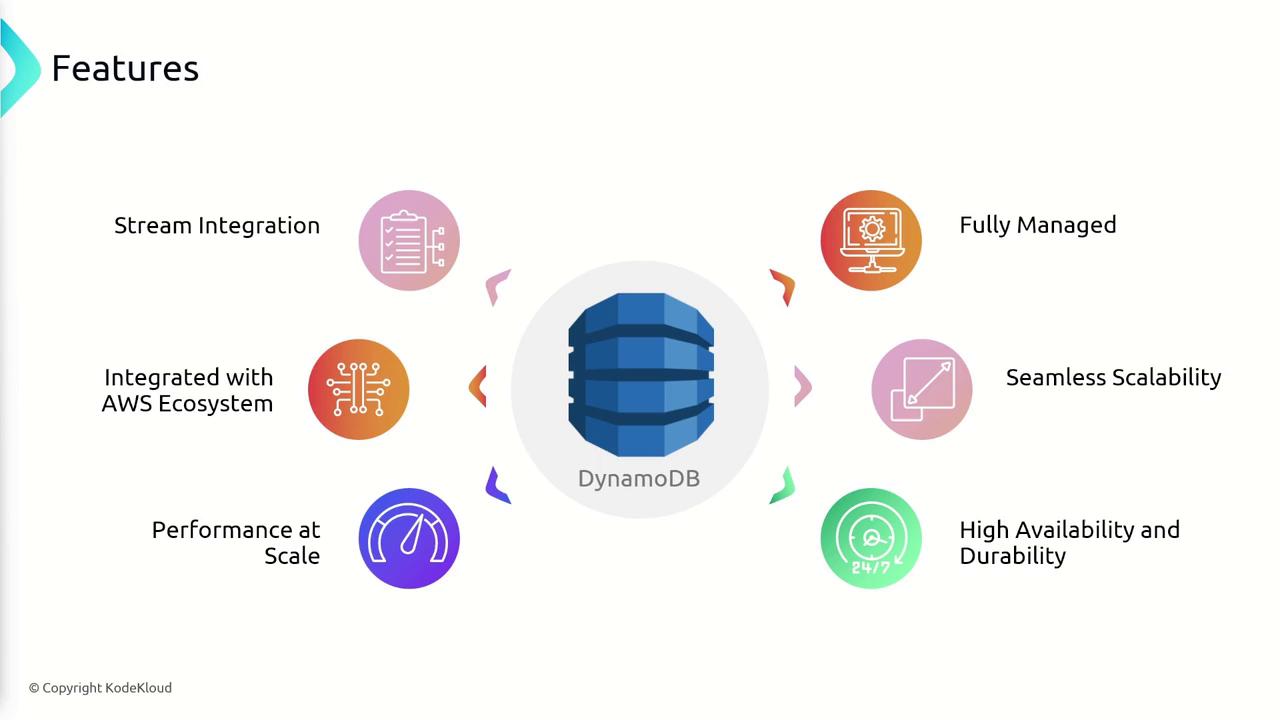
Data Storage and Structure in DynamoDB
Data in DynamoDB is organized into three main components: tables, items, and attributes.
- Table: A collection of items, similar to a table in relational databases. For example, you could have tables for users or products.
- Item: A single record within a table. In a "users" table, each record represents a unique user.
- Attributes: The data elements within an item. For instance, a user record might include attributes like email, phone number, and password.
Consider the following example of an "employees" table, where each item represents a single employee:
{
"EmployeeID": "E67890",
"FirstName": "Jane",
"LastName": "Smith",
"Email": "[email protected]",
"Position": "Product Manager",
"Department": "Product",
"HireDate": "2019-03-15",
"ContactInfo": {
"PhoneNumber": "555-1234",
"Address": "123 Main St, Anytown, USA"
}
}
In this example, simple key/value pairs (like "EmployeeID") co-exist with nested attributes (like "ContactInfo") that include detailed information.
Naming Rules
DynamoDB enforces specific naming conventions for tables, indexes, and attributes:
- Names must be encoded in UTF-8 and are case sensitive.
- Table and index names must be between 3 and 255 characters.
- Attribute names must be at least one character and less than 64 kilobytes.
- Only allowed characters may be used.
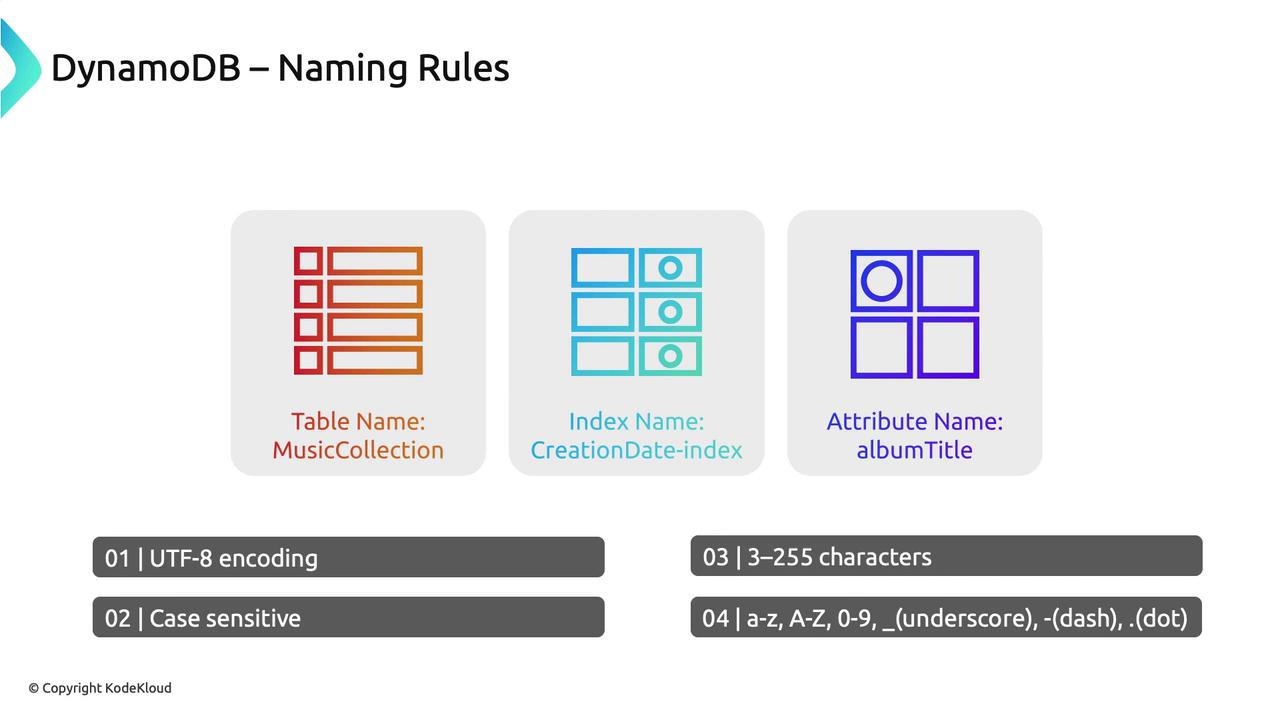
Note
Ensure your naming conventions are consistent to avoid any potential issues when interacting with DynamoDB.
Primary Keys
Each DynamoDB item must have a unique primary key. You can define primary keys in two ways:
- Partition Key: A single attribute that uniquely identifies an item. For example, using "EmployeeID" ensures every employee record is unique.
- Composite Key: A combination of two attributes—a partition key and a sort key—where the combination uniquely identifies each item. For instance, in a product reviews table, a composite key combining "user ID" and "product ID" lets a user review multiple products while preventing duplicate reviews for a single product.
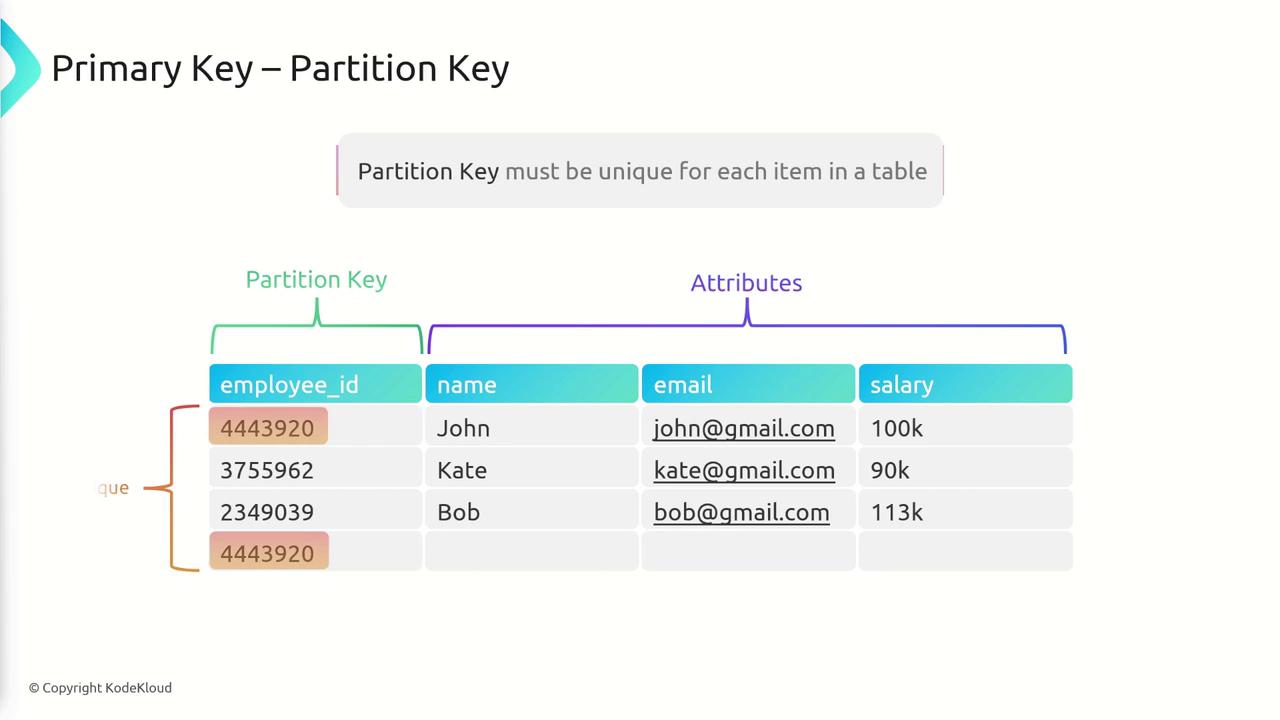
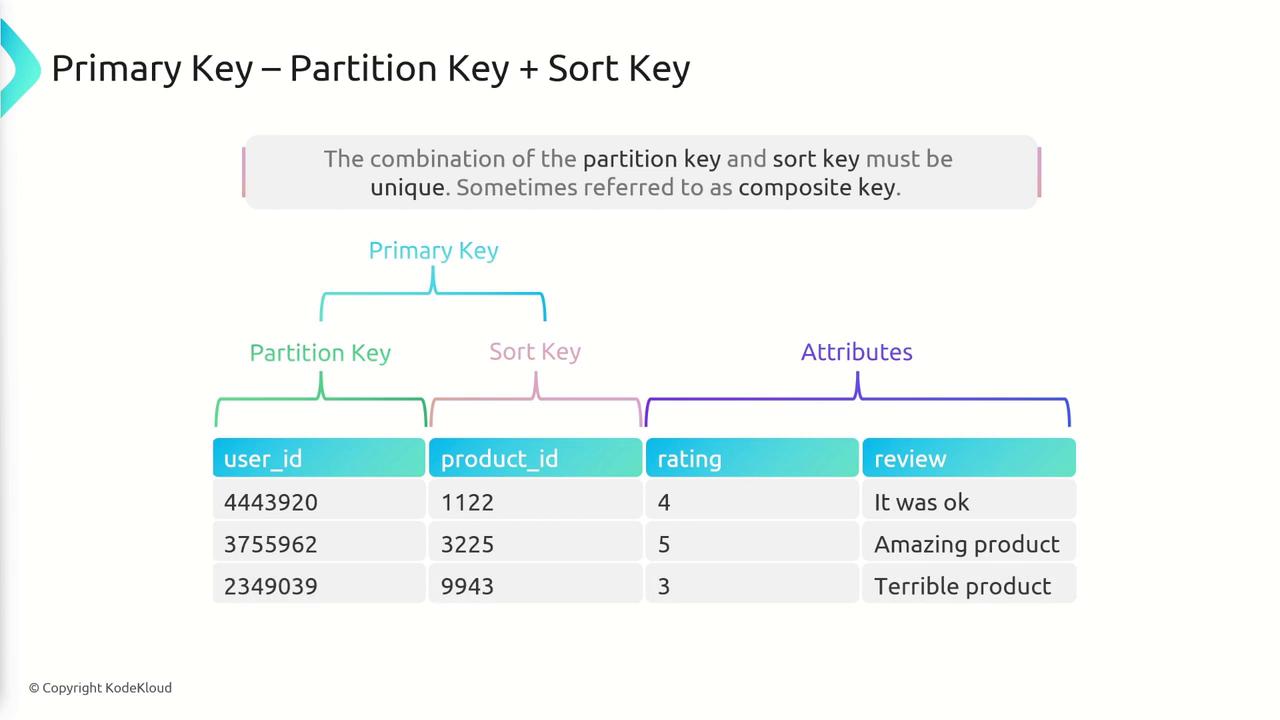
Your choice of primary key should be guided by your application's requirements. For example, if each user has a unique email address, you might choose to use "email" as the primary key.
Querying with PartiQL
DynamoDB supports PartiQL, an SQL-compatible query language that simplifies querying by using familiar SQL-like syntax. This enables users to run queries that are intuitive and efficient. For example, to retrieve a specific review, you might use:
SELECT * FROM reviews WHERE user_id = '[email protected]' AND product_id = '99999';
This approach allows you to interact with DynamoDB tables in a more conventional and readable way.
Tip
Using PartiQL can streamline development for those who are already familiar with SQL, reducing the learning curve.
Summary
In summary, here's what you need to know about DynamoDB:
- NoSQL Databases: Optimized for large, dynamic datasets and horizontal scaling.
- DynamoDB: AWS's fully managed, ACID-compliant NoSQL database offering low latency and seamless integration with other AWS services like Lambda, S3, and Redshift.
- Data Organization: Utilizes a table-based model where items (records) are composed of attributes.
- Primary Keys: Ensure uniqueness of each item, defined using either a single partition key or a composite key.
- PartiQL: Simplifies query operations with SQL-like syntax.
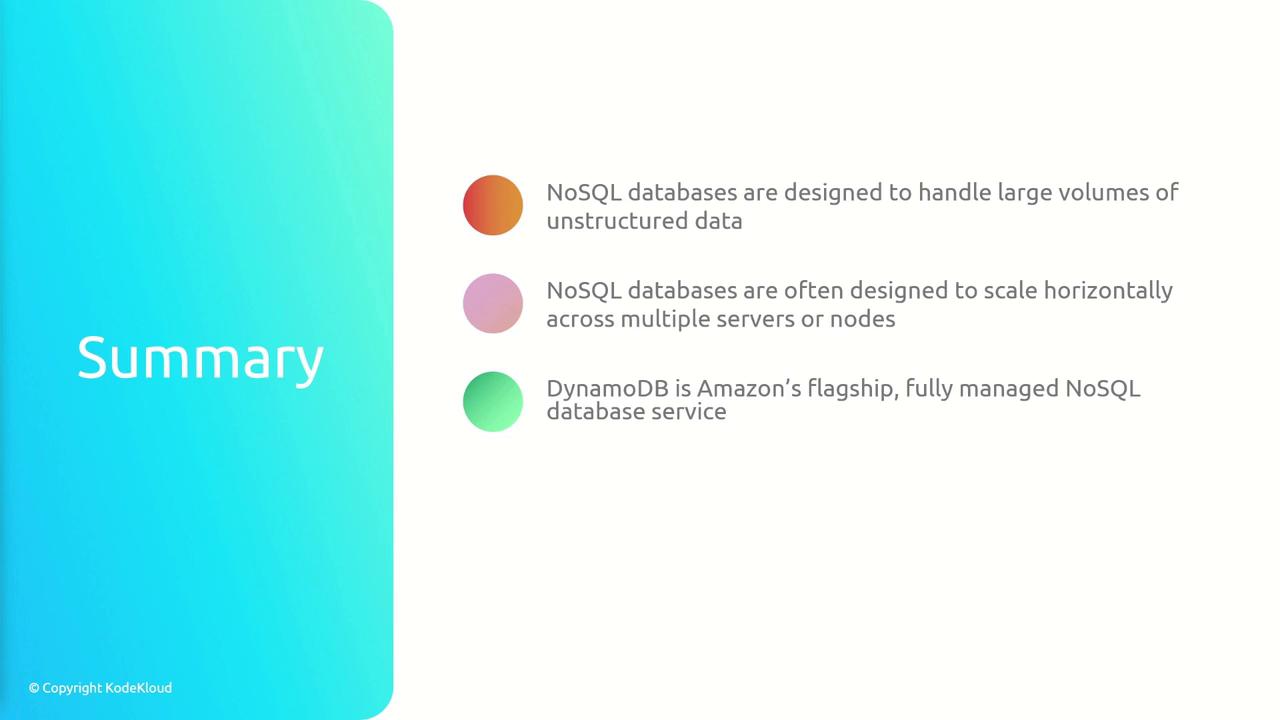
This overview should help you better understand DynamoDB's architecture and its powerful capabilities in managing application data efficiently.
Watch Video
Watch video content